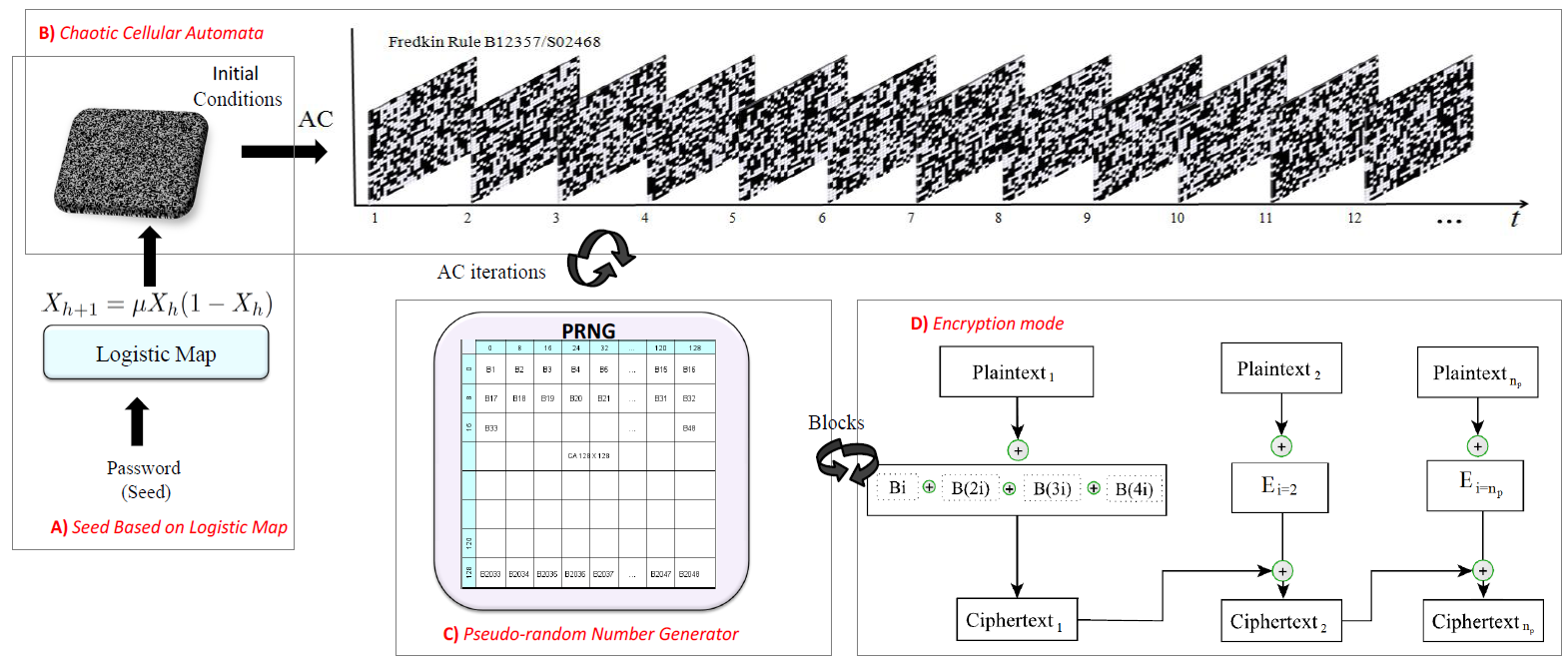Encrypting pictures using chaotic cellular automata
January 5, 2012

Proposed chaotic encryption method based on cellular automata (credit: Marina Jeaneth Machicao, Anderson G. Marco, Odemir M. Bruno)
University of San Paul in Brazil scientists have revealed a straightforward way of using chaos to encrypt images: creating a cellular automaton that generates a pseudo-random signal, Technology Review Physics arXiv Blog reports.
A cellular automaton is a grid-like array in which each cell can be either black or white at any instant. In the next time step, each square changes according to a predetermined rule, along the color of the squares around it.
The trick is to find a rule that generates a pseudo-random output so that the resulting grid looks like noise.
Ref.: Marina Jeaneth Machicao, Anderson G. Marco, Odemir M. Bruno, Chaotic Encryption Method Based on Life-Like Cellular Automata, arxiv.org/abs/1112.6326v1